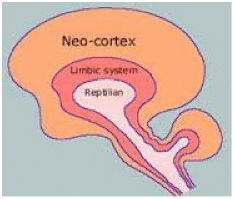Coping with Infertility
Infertility. The experience is a bad dream that couples may not wake up from for many months or even years. When it becomes clear that pregnancy is elusive, life as it has been known becomes unrecognizable.
As solutions are sought, the world gets dark. Friends who are popping out babies left and right become objects of jealousy. Questions and glances from well-meaning family feel intrusive. No matter how well situated you are financially, the costs of treatment threaten to overwhelm your plans. Career choices can become an ordeal. The array of decisions to be made, medical and otherwise, is dizzying. Worst of all, the collective demands of biology, psychology, sociology and spirituality attendant to this quest can destabilize even the most solid relationship. It’s self-evident that having sex is necessary for conception. Simultaneously it is a form of loving communication. Both go out the window, replaced by the tendency to limit sex to the fertile time, sometimes without pleasure. In many cases and sex is unnecessary because intrauterine insemination, in vitro fertilization, ovum or sperm donation, embryo adoption or surrogacy hijacks the need.
Infertility-Stress is On Par with Life-Threatening Illnesses
This is just an outline of the ordeal. Add in all of the details, combinations and permutations and you’ve got a crisis. Not an acute crisis which usually resolves itself in about six weeks, but a chronic one where complications increasingly convolute complications.
Eek! Not only is the crisis chronic, but the stress that comes along for the ride is chronic, too. The stress of infertility has been measured to be on par with life-threatening illnesses like cancer and heart disease.
How can couples cope with all of the stressful manifestations of infertility? The stress can feel, and often is, unmitigated. Fear of the process of in vitro fertilization (IVF) intensifies the stress of IVF. The stress of limited funds could preclude treatment altogether unless there is a willingness to take out loans, creating more stress. Sometimes a rich relative comes to the rescue. (But keep in mind that this rich relative would have to be brought into the sanctity of the marriage in an area that in a perfect world would be none of his or her business.) The stress on marriage is unavoidable. The likelihood of IVF stress manifesting in the workplace cannot be discounted. More stress comes if the job you are in is dreadful but it provides insurance coverage so that getting a different job is not logical. Worst of all is the fear that IVF or other treatments will fail. And the list goes on.
Infertility feels like a job. The demands of treatment and the emotional ups and downs are draining, and feeling vulnerable and depleted is a further drag. But here’s the good news. The nightmare of infertility can be relieved with day dreams. What do I mean? Are you ready for a little brain science?
The Neuroscience of Infertility
Infertility is traumatic. Traumas “land” in the limbic system of the brain, particularly the amygdala and the hippocampus. This makes it difficult to maintain positive thinking because the mind seems to be on a continuous negative loop where past failures feel as if they are predictors of future outcome.
Here is where daydreams come in. The use of our creative imagination is a very powerful antidote to negativity because positive musings “land” in the limbic system as well and can reverse and thereby relieve the physical and mental experience of infertility.
So whereas the limbic system of the brain may seem like a bane, it is a boon, too because the limbic brain is wired to have some nifty talents.

Enlisting the Brain Stem and the Neo-Cortex to De-Stress the Limbic System
The limbic brain only knows what is going on in the world based upon what impacts it from the reptilian brain and the neo-cortex. So the first talent of the limbic brain is that it responds to the breath. If we breathe as if all is right with the world –namely long, slow deep inhalations and exhalations – the limbic brain presumes that all is well. Yes, the breath is involuntary, but we can volunteer to breathe in this nourishing fashion even if we are anxious. Therefore, we can count on the breath as a built-in tranquilizer.
The second talent of the limbic brain is that if you use your neo-cortex to imagine that you are on a beautiful beach, for instance, the limbic brain does not know that you aren’t where you imagine yourself to be. Thereby, you have the power to move your state of being in the direction of serenity by engaging in mental imagery, or daydreaming.
And third, as far as the limbic brain is concerned imagery rules. The more you engage the senses and imagine (mentally experience) the sights and sounds, smells, tastes and feel of the beach, the more the limbic brain presumes you are actually there. We are lucky to be wired this way.
Lucky, too, and fourth, is the fact that the limbic brain cannot tell time. That means that if you were to spend even five minutes breathing freely and easily imagining yourself in a serene setting of your choice, your limbic brain would signal your mind and body that it is safe to release the vigilance that results in mind/body stress. But as far as the limbic brain is concerned, five minutes could be five hours. All that matters is that a few minutes may be enough (though you may need a bit more time) for the spasm of mind/body stress to let go.
Fifth, the limbic brain loves creativity. Not unlike a kindergartener, the limbic brain is responsive to curiosity and novelty. Following the imaginings of the neo-cortex with intrigue about the sound and gathering momentum of the surf, for instance, contributes to the letting go process. You need to take this seriously enough to invest in really feeling as if you are at the beach.
And last, with relaxation, which can be guided with the breath and with verbal or thought suggestions, the unconscious mind comes forward. Our unconscious is the smartest part of us and can be encouraged to locate the inner strength, resources and resiliency needed to let go and let down.
Eliciting Day Dreams to Relieve the Nightmares
To imagine yourself on a beach or mountaintop while breathing easily and freely can have enormous impact on the nervous system. It would feel much easier to be you, which is the point.
You can achieve harmony by listening to guided audio recordings which can be ordered by “googling” stress reduction programs created specifically to relieve the stress of infertility. Other techniques such as The Relaxation Response can empower the return to tranquility. The Relaxation Response is less a day dream than a dreamy state in which you repetitively focus your attention on a word, phrase or prayer in coordination with the breath to screen out the intrusion of negative thoughts. This breaks the spasm of stress as well. Using the mental muscle of mindfulness is another option that can keep the mind from wandering into trouble.
I teach my patients these approaches to stress reduction. But, as a trained and experienced clinical hypnotherapist, I can add a hypnotic dimension to the purposeful day dreaming when I am guiding an imaginative interlude. In my opinion hypnosis is the gold standard for purposeful day dreaming. I make personalized recordings for my patients, which allows them to “visit” an inner, recuperative space as needed to reinforce intention.
When we are under duress, the body walks the planet, but the mind has a way of touring the solar system. Riding the breath back into the body in combination with day dreaming in a targeted way can bring the mind and body back to the unity that is needed to relieve the spasm of stress.
Given the nature of the infertility nightmare, disappointments are built in to the experience, are unavoidable and can blindside. Learning the power of what I’m calling day dreaming is the boon that can be used to rescue yourself at critical moments, rather than going down the drain.
Make Daydreams Part of Your Daily Stress Management
The reality of infertility is such that having the tools to rescue yourself every day, maybe several times a day, can make all the difference. There are other stress reduction techniques that ease the mental and physical burden of infertility while waiting for the miracle. In fact, I teach a vast array of mind/body coping skills in classes to women in the quest for parenthood. You can learn more about these approaches in my book, On Fertile Ground: Healing Infertility, on my website, www.helenadrienne.com.
While learning and practicing these techniques can feel like yet another “job,” the important thing is that having an array of stress-reducing options in your repertoire is empowering, not only during this crisis, but for any adversity that is bound to strike in the future. The silver lining of the infertility experience – learning to be a new, improved version of yourself – can be the bless in the mess.
©March 2016
Helen Adrienne, LCSW, BCD


